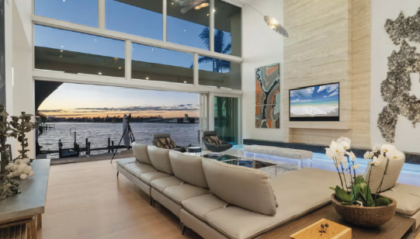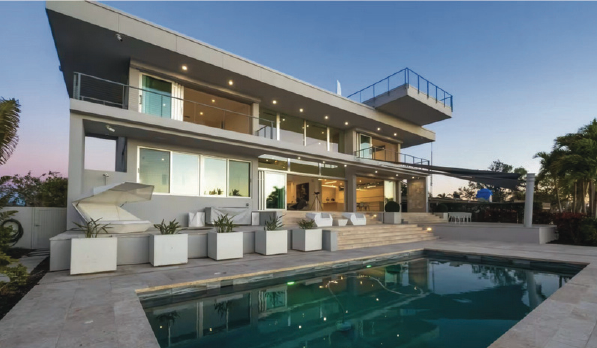Stu Cook, the bassist of rock band Creedence Clearwater Revival, recently listed his Sarasota waterfront residence for $9.975 million.
Cook was a member of the American rock band from 1959 to 1972. The band, known for  hits like Bad Moon Rising and Fortunate Son, helped define a new era of rock,
hits like Bad Moon Rising and Fortunate Son, helped define a new era of rock,
The home was designed by Carl Abbott, who studied under modernist architect Paul Rudolph, and designed many of the iconic School of Modern Architecture buildings and homes. Sarasota School of Architecture, otherwise known as Sarasota Modern, a distinct version of regional mid-century modernism that was popular between the 1940s and 1960s and combined the minimalist intentions of the International Style with elements tailored to Florida’s subtropical climate. This meant large expanses of glass, shaded courtyards, and louver systems were frequently employed to manage sunlight, heat, and humidity.
Originally built in 2002, Cook’s home was completely overhauled in 2016 with new electrical and plumbing systems, new floors and finishes, and smart house features. Located within the San Remo Estates, a waterfront community prized for its access to the open waters of Sarasota Bay, the clean-lined architectural eye-catcher sits on less than half an acre with a private dock. Spanning about 4,600 square feet, there are four bedrooms and four full bathrooms, plus a half bath split over two main levels.
Cook and his wife, Dana, bought the waterfront home in San Remo estates in 2013 for $2.95 million, records show.
An accidental fire in the kitchen, the result of a cooktop that was left on, burned down most of the Gulf Coast home, save for some bearing walls, the concrete pad and the garage. The home had to be completely rebuilt, and all new systems—from electrical to plumbing to the HVAC—were put in place.
The Cooks worked with architect Carl Abbott, who designed the original home, which was built in 2002, to bring his plans back to life. Abbott, a modernist, is the last surviving original member of the Sarasota School of Architecture, a post-war modern style that emerged in the Gulf Coast city.

